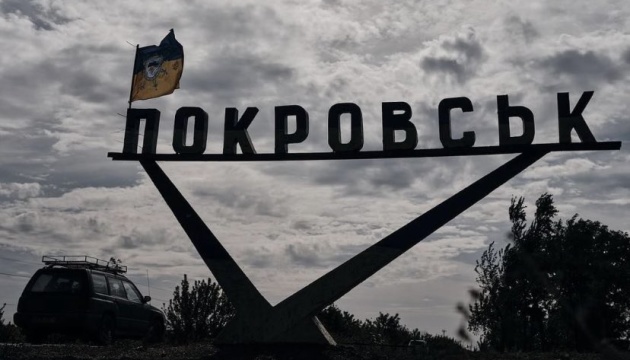Hell near Pokrovsk: Russia lost more than in the Second Chechen War
17 June 19:57
The level of Russian army losses in the Pokrovsk sector has reached a critical point. Over the last day alone, 204 combat engagements took place in 11 frontline areas, including the Kursk bridgehead. The most intense fighting continues in the Pokrovske, Lyman and Novopavlivka sectors, with the militants attacking these areas 122 times.
In total, Ukrainian forces stopped 76 enemy attacks in the Pokrovsk sector alone. Military expert Dmytro Snegiryov noted in an exclusive commentary for [comersant ] that the situation remains particularly tense near the settlements of Poltavka, Myroliubivka, Malynivka, Yelyzavetivka, Lysivka, Udachne, Kotlyne, Novosergiivka and Horikhove
“The occupiers’ losses here are comparable to the Second Chechen War. In January alone, more than 15,000 Russian soldiers were killed, of which about 7,000 were irretrievable losses,” Dmytro Snegiryov
For comparison, during the entire period of the Second Chechen War, the Russian army lost more than 6,000 people. That is, the scale of current losses in the war against Ukraine is significantly higher than historical figures.
In April, the situation worsened: according to the Defence Intelligence of Ukraine, Russian troops lost between 8,000 and 10,000 killed, and total losses, including the wounded, reached up to 17,000.
At the same time, an untrained reserve is being sent to the front: the Russians are forming assault units from recruits who have been trained for only 3-4 weeks. In particular, the 15th “peacekeeping” brigade from the Samara region has already lost its third unit, Snegiryov emphasized.
Change in Russian tactics is a sign of criticality
The change in tactics is also a sign of the critical situation: Russian barrier units have begun to mine the escape routes of their own assault groups, leaving virtually no chance for the evacuation of the wounded.
The occupiers are also massively using motorcycles, scooters, buggies, and cars instead of armored vehicles due to the dominance of Ukrainian FPV drones. The Russian army itself estimates that up to 75% of losses in the Pokrovske direction are caused by Ukrainian drones.
“The Armed Forces of Ukraine launch 4-6 drones at one target at a time. The Russians cannot afford such a density of fire,” emphasizes Snegiryov.
Ukrainian defenders are also scaling up the use of fiber-optic-controlled drones, which allow them to hit targets at a distance of more than 20 kilometers, including enemy heavy equipment.
Despite the enormous losses, the enemy continues to try to advance towards Pokrovsk, trying to take control of key routes and create an operational encirclement of Ukrainian forces.
“Their goal is a flanking advance through Malynivka, Novoekonomichne towards Myrnohrad and Pokrovsk. But the price of such offensives for Russia is completely destroyed elite units and strategic degradation of its own army,” noted Snegiryov.
Pokrovsk is a key target of the enemy. Why?
It is not only a large urban agglomeration, the last frontier before the administrative border of Donetsk region, but also an important transport and logistics hub that connects Donbas with Dnipropetrovs’k region. Highways leading to Chasovyi Yar, Kostiantynivka, and Kramatorsk pass through the city.
But there are deeper motives for the Kremlin:
- The region’s lithium deposits near the village of Shevchenko are among the largest in Europe.
- Coking coal, which is critically important for Ukrainian metallurgy. Experts estimate that its loss will reduce steel production in Ukraine by three times, from 7.5 to 2.5 million tons.
- This is a blow to the budget, to energy security, and to thousands of Ukrainian jobs.
Military expert Oleh Zhdanov believes that frontal attacks on Pokrovsk itself are impossible for now: there is a layered defense, urban development, and a serious industrial zone. However, according to him, if Ukrainian forces have managed to prepare defensive lines on the dominant heights, we have a chance to delay the enemy and inflict critical losses on them.
The battle for Pokrovsk is not only about the frontline, it is a battle for energy independence, economy and strategic future.









